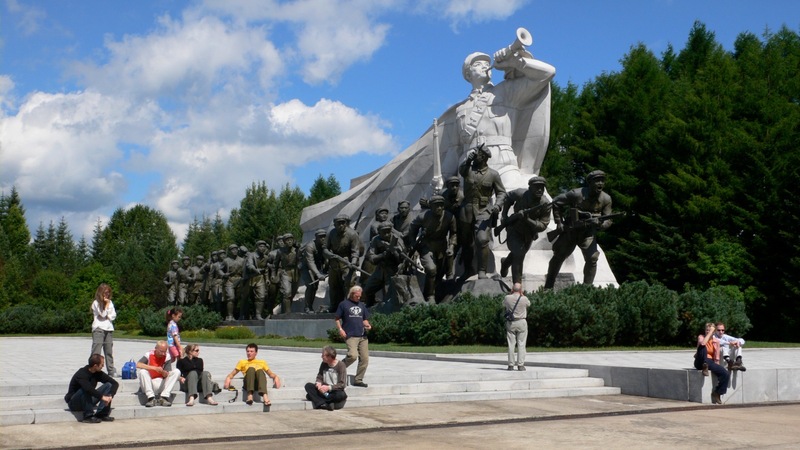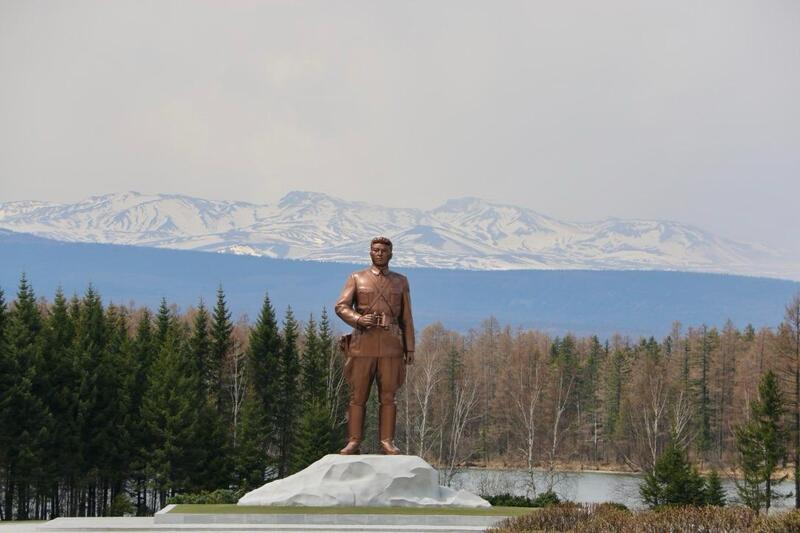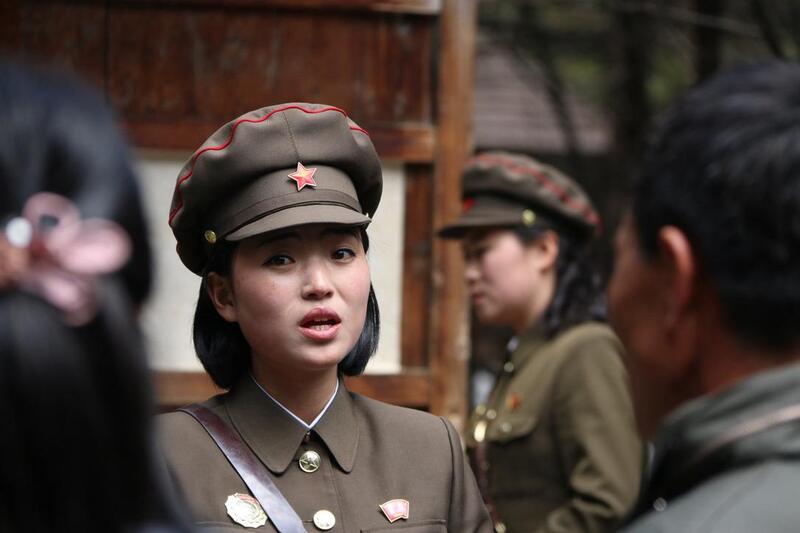A Guide to Samjiyon, North Korea.
Samjiyon, lying in the northernmost reaches of North Korea, is a city that really captures the essence of North Korea's natural beauty - and revolutionary history.
It's a pretty remote area, known for its breathtaking landscapes and significant historical sites. It is also not generally visited by foreign tourists and gets pretty cold in the winter.
Not just a place of natural beauty and historical significance, is also a window into North Korean culture and ideology. The region's development is closely linked to the government's efforts to promote tourism and showcase the country's achievements.
Here, we take a look at Samjiyon to provide an in-depth.
Samjiyon History
Samjiyon Weather
Samjiyon Mt. Paektu
Samjiyon Geography
Samjiyon Landscape
Samjiyon Tourism
Recent Developments in Samjiyon Tourism
Samjiyon December 2024, Opening
Samjiyon History
Samjiyon holds a revered place in North Korean history. The region is closely associated with Kim Il Sung, the founding leader of North Korea, who is said to have fought against Japanese forces in the area during the 1930s.
In North Korean historical canon - that is not necessarily a result of diligent research in the archives - this area is also the birthplace of Kim Jong Il. According to North Korean histography, Kim Jong Il was born here in 1942 (conveniently 30 years after his father) at Mt. Paektu Secret Camp.
Samjiyon itself was established in 1961, during the post-war reconstruction period. It has since become a symbol of revolutionary resilience, with numerous monuments and sites commemorating the anti-Japanese struggle.
One of the most significant historical sites in Samjiyon is the Samjiyon Grand Monument.
This structure features a statue of Kim Il Sung and reliefs depicting scenes from the anti-Japanese guerrilla war.
Samjiyon Weather
Samjiyon has a subarctic climate and weather can change really fast.
Summers are mild and wet, winter are cold and dry.
In the summer the thermometer usually reaches the lower 20s Celsius, while in the winter it drops below minus 20.
Most of the precipitation falls during the summer months.
Heavy winds are almost a daily visitor here.
Up on Mt. Paektu the weather here can literally change in just a few minutes. One moment the whole area can be blanketed in thick fog, and the next it is clear blue skies as far as the eye can see and then one get soaked in a freak rainstorm!
Samjiyon Mt. Paektu
Mt. Paektu is the highest mountain in North Korea and on the Korean Peninsula.
It has been part of Korean mythology since time immemorial.
It is where King Dangun the founder of the first state on the Korean Peninsula, Gojoseon, was born. Note that the Korean name for North Korea is also Joseon.
This made this area not only the cradle of the Revolution but also the whole Korean nation.
It is no surprise that North Korean history writers chose this place to be the birthplace of Kim Jong Il.
Samjiyon Geography
Samjiyon is located in Ryanggang Province, near the Chinese border.
The city sits at an altitude of approximately 1,300 meters (4,300 feet) above sea level.
This makes it one of the highest settlements in North Korea. The region's geographical location and elevation contribute to its unique climate, characterized by cold winters and mild summers.
The area of Samjiyon is surrounded by mountains, including the iconic Mount Paektu. This is the highest peak on the Korean Peninsula. This volcanic mountain is a significant geographical and cultural landmark for the whole of the Korean peninsula. In Korean mythology, this is the birthplace of the Korean people.
The mountain's crater lake, known as Heaven Lake, is also one of the most popular sites. It is claimed to be Asia's highest alpine lake.
Samjiyon Landscape
When visiting Samjiyon, you can expect to be surrounded by mountains. The towering peaks of Mount Paektu dominate the skyline, their slopes blanketed in dense forests of pine and birch. These forests are home to a variety of wildlife, including bears, deer, and numerous bird species, making the area a haven for nature enthusiasts.
The region's most striking feature is Heaven Lake, a pristine crater lake that lies at the summit of Mount Paektu. In winter, the lake freezes over.
The surrounding forests and valleys are crisscrossed by numerous streams and rivers, their waters fed by the melting snow from the mountains. These waterways not only enhance the area's natural beauty but also support the local ecosystems.
To note about Mt. Paektu is its slow incline up. It's not a steep mountain climb. Rather, you can ascend slowly almost to the peak by bus, then transfer to foot or the on-site train to take you to the peak.
Samjiyon Tourism
In recent years, Samjiyon has been a focal point of tourism redevelopment in North Korea to make it an important place both for domestic and international tourism. The government has invested heavily in developing the area, with new infrastructure and facilities designed to attract visitors.
Samjiyon is accessible via domestic flights twice a week from Pyongyang or by charter flights from North Korean domestic airports.
Before the pandemic Chinese groups could also cross at Samjiyon Crossing overland from the Yanbian Korean Autonomous Prefecture in China.
North Koreans can also reach the area by train.
Tourism in Samjiyon is heavily focused on the region's revolutionary history and natural beauty. Visitors can explore the Samjiyon Grand Monument and other historical sites, gaining insights into the anti-Japanese struggle and the role of Kim Il Sung in North Korean history. Guided tours often include visits to the battle sites and camps used by the guerrilla fighters, providing a vivid sense of the area's historical significance.
Nature enthusiasts are drawn to the region's stunning landscapes.
Mount Paektu
Mt. Paektu is a 90-minute-long drive from Samjiyon along bumpy roads through deep forests giving way to an eerie moonscape at the foot of the mountain. According to North Korean news reports the roads are also being upgraded in the area.
There are two main ways to get to the top from the car park at the bottom of the mountain; walking up the path (45 mins – 1 hour) or taking the funicular railway (about 5 mins). The latter, however, was only sporadically operational before the pandemic.
Janggun Peak is the very highest point on the mountain (2750 m) and on the whole peninsula. This is about another 20-minute walk uphill.
At the peak, one will most definitely meet military groups visiting the area, as well as families, work units, and students many of which are very emotionally affected by seeing this sacred mountain for the first time.
Korean tradition dictates that all Koreans should see Mt. Paektu at some time in their lives.
South Koreans tend to manage this by flying over to the Chinese side known as Changbaishan in China.
Skiing in Samjiyon
Opposite the Pegaebong Hotel which was the only hotel in the Mt. Paekdu area that could accommodate tourists before the pandemic lies Pegaebong Hill. On the hill, there was a ski run on the hill that was a wide cut in the tree line running from the top of the hill all the way down. In winter this was sometimes used as a ski run; however, there were no facilities (ski lift, ski rental, markers, etc).
At the time of filming Michal Palin in North Korea construction works on Pegaebong Hill could already be spotted.
In July 2024 Kim Jong Un visited the Samjiyon area and also a newly built resort named Pegaebong Hotel - it is unclear at this point what is the fate of the old hotel bearing the same name - where he ski slop now has facilities such as ski lift.
According to the tourism redevelopment plans, more ski slopes and resorts will be developed in the area in the next two years.
At the Secret Camp in Samjiyon
Recent Developments in Samjiyon Tourism
The remodelled city of Samjiyon was inaugurated in December 2019. New housing quarters and public facilities were built all giving an impression of a northern alpine town with a Korean twist.
In July 2024 Kim Jong Un visited the area where the North Korean leader conducted an on-the-spot guidance at the newly finished Pegaebong Hotel and ski slope and inspected the plans for future developments related to tourism in the area that are scheduled to be finished in the next coming 2 years. These include a remodelled airport in Samjioyon, an upgraded road and rail network, and new ski resorts.


